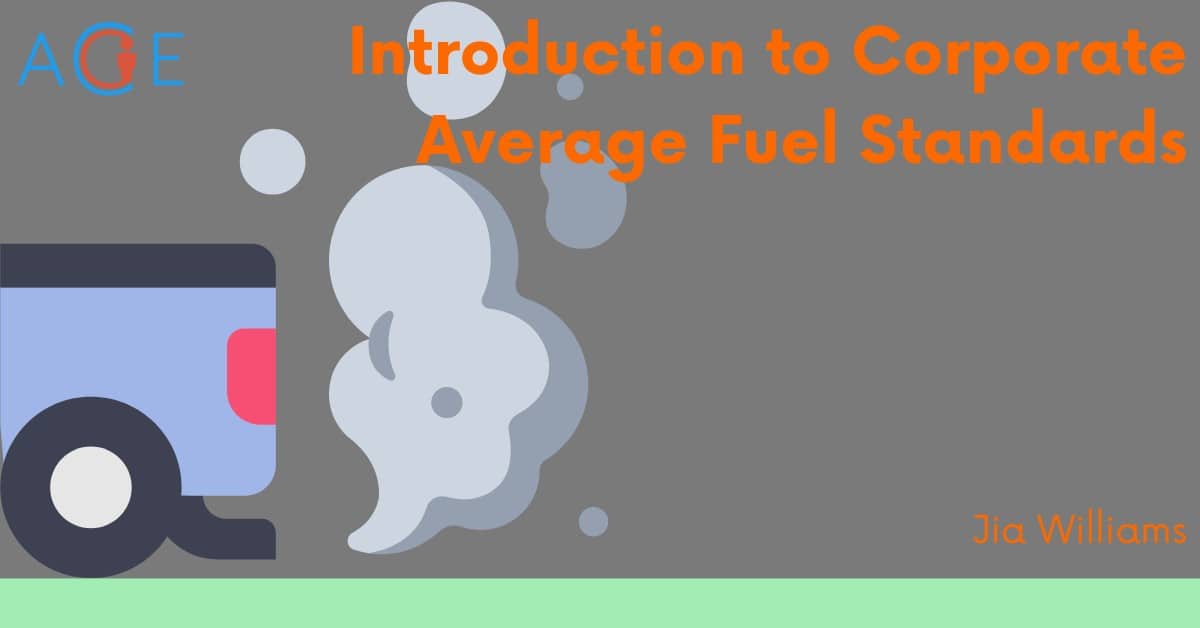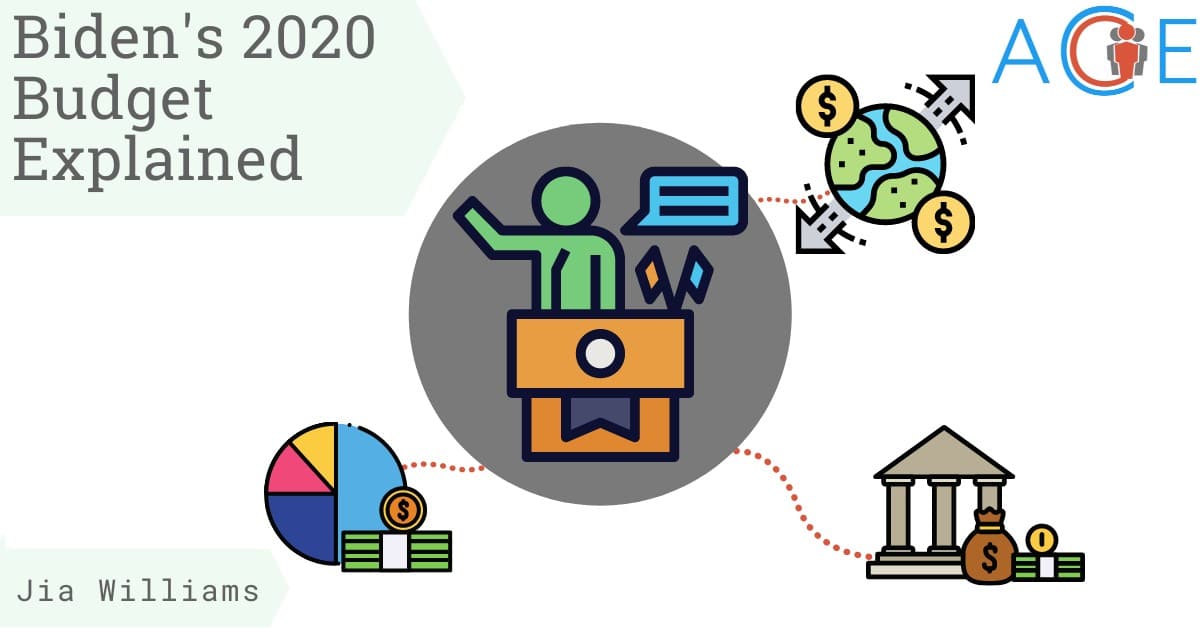Overview of CAFE Standards
Corporate Average Fuel Economy (CAFE) standards are government-set standards regulating how far vehicles should be able to travel on a gallon of fuel. The three different classifications of vehicles, light-, medium-, and heavy-duty, have different CAFE standards. Higher standards mean vehicles should be able to travel further on a single gallon of fuel. CAFE standards for light-duty vehicles are the most relevant to the average consumer, as the category includes passenger cars and light trucks. The standards are set and enforced by the National Highway Traffic Safety Administration (NHTSA) under the Department of Transportation. The Environmental Protection Agency (EPA) calculates average fuel economy levels and sets greenhouse gas emissions standards that accompany CAFE standards.
CAFE standards aim to increase fuel efficiency in vehicles and reduce total energy consumption. They are thought to improve the nation’s energy security, save consumers money, and reduce greenhouse gas emissions.
Recent Policy History
CAFE standards were first established by Congress in 1975 under the Energy Policy and Conservation Act. They were primarily created in response to the 1973 oil embargo, which posed challenges to the foreign oil-dependent U.S. economy. Congress hoped CAFE standards would double the average fuel economy of new vehicles by 1985 and reduce the country’s dependence on foreign oil imports. Standards then remained largely unchanged until the Energy Independence and Security Act of 2007. The legislation, passed under the Bush administration, raised the fuel economy standards of light-duty vehicles to an average of at least 35 miles per gallon over the next 10 years.
In the early 2000s, higher levels of driving and an increased market share of less-efficient SUVs and light trucks contributed to increased oil consumption in the U.S. To combat this, the Obama administration worked with the auto industry to create a two-phase national program to increase fuel efficiency and create greenhouse gas emissions standards for light-duty vehicles. The program is governed by the NHTSA, which oversees CAFE standards, and the EPA, which sets greenhouse gas emissions standards.
However, many of the standards set under the Obama administration were rolled back by the Trump administration. In place of CAFE standards, the Trump administration created Safer Affordable Fuel-Efficient (SAFE) standards to give manufacturers more freedom and reduce the quality-adjusted prices of vehicles by an average of $2,200. While SAFE 1 still increased fuel economy standards, it did so at a slower rate than the standards proposed by Obama’s administration. SAFE 1 also proposed that manufacturers comply with the standards by focusing on greenhouse gas emission standards because of the subsequent ability to help reach CAFE standards. SAFE 1 ultimately sought to loosen the annual fuel efficiency increase from 5% to 1.5% through 2026.
SAFE 1 has since been repealed by the Biden administration for overstepping the agency’s legal authority and for not taking local and national interests into account. Under the new administration, the NHTSA finalized CAFE standards for model years 2024-2026 on March 31, 2022. These recently passed standards require about 49 miles per gallon for all light-duty vehicles by 2026 by increasing fuel efficiency by 8% annually for the years 2024 and 2025, and 10% annually for the year 2026.
Arguments for CAFE standards
The NHTSA has found that the recently set CAFE standard of 49 miles per gallon can save consumers nearly $1,400 in total fuel expenses over the lifetime of compliant vehicles and save 234 billion gallons of gas between 2030 and 2050. They’ve also found that the standards reduce greenhouse gas emissions, air pollution, dependency on oil, and will diversify energy usage to increase energy security. The Department of Transportation states that CAFE standards will increase the availability of alternative fuel vehicles and promote the advancement of innovative technologies.
Scholars argue that CAFE standards have kept U.S. gasoline consumption at a low annual growth rate of 0.2% a year, playing a crucial role in reducing oil imports and dependency. In general, they estimate that the standards have saved consumers two trillion gallons of gasoline since first established. They also argue that these regulations are more effective than a gas tax because they move responsibility and decision-making from the consumer to the manufacturer. This prompts manufacturers to use technology to make their products more fuel-efficient and eventually save consumers money on fuel, despite higher initial costs. On average, a more fuel-efficient vehicle costs $4,800 more than current models, but the savings from reduced fuel consumption are almost four times the additional cost.
The Alliance to Save Energy also argues that the standards save consumers money, predicting that by 2025 consumers will have received roughly $8,200 in net savings over the life of the vehicle. Altogether, this results in $1.7 trillion in savings nationwide. In addition, buyers of 2017 vehicles are expected to save money more than 94% of the time, given that ¼ of all new model year 2017 cars would have greater fuel economy and cost less than their 2011 counterparts. On a national scale, the standards are also thought to enhance U.S. competitiveness. Innovative vehicle manufacturers have a first-mover advantage, helping them achieve greater economies of scale and benefit from technological learning.
Arguments Against CAFE Standards
Alternatively, the Heritage Foundation found that to compete with foreign automakers, manufacturers will have to move production oversees, putting thousands in the auto industry out of jobs. This negative economic impact is compounded by the fact that CAFE standards are only cost-effective if fuel prices are high. Without high fuel prices, the cost of research and development and replacing low-efficiency vehicles outweighs the financial benefits of more fuel-efficient vehicles. In addition, CAFE standards may incentivize reducing the weight and steel content of a vehicle, leading to more unsafe cars and designs and increased fatalities.
There are a few challenges facing CAFE standard implementation, including the time horizon over which these policies take effect. Since standards apply only to new vehicles, it can take a long time for the full effects to be realized. It currently takes about 15 years for the benefits of CAFE standards to truly take effect and permeate the entire vehicle fleet. It is also difficult to understand the full long-term impact of fuel efficiency on emissions because of the potential for the “rebound” effect, which occurs when greater fuel efficiency encourages more driving, subsequently offsetting any emission reductions resulting from the standards. Another pressing challenge is the lack of coherency in CAFE standards across administrations.




